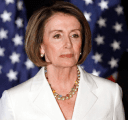Surmount News
If there’s one thing investors have learned in 2025, it’s that the Federal Reserve is still running the show. Every rate decision, inflation update, and policy tweak sends markets scrambling to adjust. Some assets are thriving, others are struggling, and a whole lot of money is moving based on what the Fed does next.
So what exactly is happening, and how should investors position themselves? Let’s break it down.
The Fed’s 2025 Playbook

Coming into the year, the Fed was caught between two competing pressures: inflation that still hadn’t fully cooled off and an economy that was slowing more than some expected. After years of aggressive rate hikes, many thought 2025 would be the year of rate cuts—but the Fed isn’t rushing into anything.
Instead, it’s taking a slower, more cautious approach. Interest rates remain elevated, with only minor adjustments downward so far. That’s because while inflation has come down from its 2022 peak, it’s still stubbornly above the Fed’s 2% target. Housing costs, services, and wages have all remained sticky, keeping pressure on policymakers to avoid cutting rates too quickly.
At the same time, the Fed is still unwinding its massive balance sheet, draining liquidity from the system in a process known as quantitative tightening (QT). Less liquidity generally means more volatility in financial markets, and that’s exactly what we’ve been seeing.
How It’s Affecting the Markets

Stocks: A Tale of Two Markets
With interest rates staying higher for longer, the stock market has become increasingly divided. High-growth, speculative stocks—especially in tech—are feeling the pressure. Companies that relied on cheap debt to fuel expansion are now facing higher borrowing costs, making investors more selective.
On the other hand, blue-chip companies with strong cash flows and reliable earnings are holding up well. Sectors like energy, industrials, and healthcare have shown resilience, particularly those that benefit from government spending or inflation-driven pricing power. Dividend stocks, which provide steady income, have also gained appeal as investors look for stability.
The days of throwing money into high-growth tech and watching it double overnight might be behind us, at least for now. But for investors willing to focus on quality and cash flow, there are still plenty of opportunities.
Bonds: Finally Relevant Again
For over a decade, bonds were an afterthought. With interest rates near zero, they offered little return compared to stocks. But now? Bonds are actually paying investors to hold them.
With the 10-year Treasury yield hovering at levels we haven’t seen in years, bonds are once again a serious contender for investors looking for lower-risk returns. Even short-term bonds and high-yield savings accounts are offering solid yields, making cash a viable option for parking money.
This shift has changed how investors think about risk. If you can get a 5%+ return on Treasuries with little risk, suddenly, the bar is higher for equities. It also means diversification strategies are evolving—bond-heavy portfolios that were seen as outdated in the low-rate era are now making a comeback.
Crypto and Alternative Assets: The Liquidity Effect
Crypto markets, which thrive on excess liquidity, have been in a weird place. Bitcoin and Ethereum have shown strength, partly due to the growth of institutional adoption and new ETF approvals, but the broader altcoin market has struggled. When the Fed keeps money tight, riskier assets often feel the squeeze first.
That being said, if the Fed shifts toward more rate cuts later in 2025, the crypto space could see a renewed wave of interest. Just like in past cycles, a looser monetary policy tends to drive more speculative risk-taking, and crypto stands to benefit if the Fed pivots toward easier financial conditions.
Strategies for Navigating the Fed’s Policy Moves
Don’t Try to Predict, Just Prepare
One of the biggest mistakes investors make is trying to time the Fed’s next move. Will they cut rates next quarter? Will they hold steady for longer? Instead of guessing, focus on positioning your portfolio for multiple scenarios.
Holding a mix of assets—some that perform well in a high-rate environment (bonds, dividend stocks) and some that could benefit from a shift toward easier policy (growth stocks, crypto)—ensures you’re not overexposed to one outcome.
Quality Over Speculation
In a world where borrowing costs aren’t at rock-bottom levels, companies with strong fundamentals matter more than ever. If a business needs cheap money to survive, it’s probably not the best bet right now.
Instead, prioritizing stocks with steady earnings, strong cash flow, and reasonable valuations is a better approach. This doesn’t mean avoiding growth stocks entirely—just being more selective about which ones are built to last.
Keep an Eye on Liquidity Trends
One of the underappreciated factors in investing is liquidity. When the Fed is draining liquidity from the system, asset prices—especially riskier ones—tend to struggle. If and when the Fed reverses course, that could create opportunities for more aggressive positioning.
Paying attention to changes in the Fed’s balance sheet, money supply growth, and Treasury issuance can provide early signals of where liquidity is heading. These details might not make headlines, but they have a massive impact on market behavior.
The Bottom Line
The Fed’s policy decisions in 2025 are shaping markets in real time. Stocks, bonds, crypto—every asset class is reacting to interest rates, inflation trends, and liquidity conditions. While predicting exactly what the Fed will do next is impossible, understanding its impact on the markets can help investors make smarter decisions.
Instead of chasing the latest hype or trying to outguess policymakers, the best approach is staying flexible, focusing on quality, and keeping a close watch on liquidity. The Fed may be in control, but investors who adapt to its moves can still find plenty of opportunities.
The information presented is for educational purposes only and not an offer or solicitation for any specific investments. Investments involve risk and are not guaranteed. Consult with a financial adviser before making any investment decisions. Past performance does not guarantee future results.
Automate any portfolio using data-driven strategies made by top creators & professional investors. Turn any investment idea into an automated, testable, and sharable strategy.





